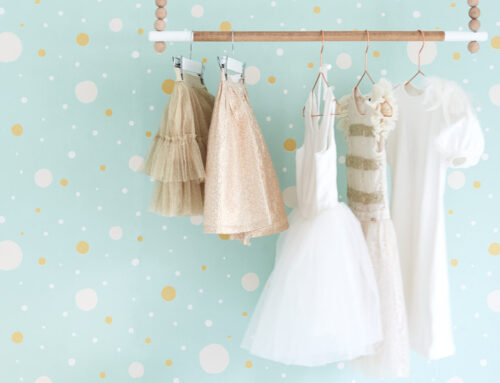Getting your home “market ready” can a daunting process. It’s hard to avoid being caught up in the pressure of getting everything “just so” to give you home the best chance of selling.
Often, vendors find themselves in a complete tizz trying to fix everything up and fork out the big bucks to ensure every last detail is addressed. However, the reality is that what a vendor and a buyer see are two completely different things. On average, a buyer will spend less than 30 minutes viewing the property they go on to buy – so their ability to check everything out is clearly quite limited.
Now that’s not permission for vendors to ignore addressing the aspects of a property than impact its liveability i.e. quickly painting a window shut or disguising a big hole in the wall with some artwork. I’m suggesting that the approach to preparing a home for sale needs to be well considered so that time and dollars are spent wisely.
In my experience, there are three different categories of homes that hit the market. These different ‘condition categories’ dictate how much time, effort and money is spent preparing them for sale. Vendors need to determine how best to tackle these tasks depending on the buyer that are appealing to before putting them home on the market.
The first category is the “turn key” property.

Please come on in and settle on down
Vendors of homes in this category should be focused on ensuring the functionality and appearance of these homes. You want to present the most low-maintenance, high impact home to a perspective buyer. It may be of significant benefit to organise for the home to be professionally styled so the décor matches the quality finish of the property itself. Vendors should also go through the home with a fine-ish tooth comb to ensure everything is in good working order.
It’s all about the function and quality, so make sure everything opens and closes as it should. If there is a drawer that struggles to open then it will impact the overall perception of the quality of the home. It will scream “cheap reno” or “dodgy” and they’re the last things you want them to be thinking!
The second category is the “I am who I am” condition property.

I’m gonna need a lot of work
Vendors of these properties will hopefully be able to recognise and accept that their home will be either a “knock’em’downer” or a “fixer upper”. Expense can most certainly be spared in preparing these houses for sale. The price tag will reflect what work is required to get this house dream worthy. The focus for homes in this category is to ensure they appear hygienic and safe. Don’t worry about painting or fixing any dodgy cupboard doors in these properties – in all likelihood they are getting ripped out immediately!
And the third category is the “got potential” category.

You’d get sick of me after a while
There are more of these properties that hit the market than any of the above two categories and the ones people often stretch their budgets to secure. Often referred to as the daggy house or the tired but liveable number.
These are the homes that need a little bit of TLC to “bring buyers on a journey” (purposefully dropped the ‘j’ word in for the gag factor. Lol!). These are likely the houses that will be renovated in some shape or form in future but will be the ones people could see themselves in for 5 years if need be. Therefore installing a new kitchen or bathroom is likely to have a low or negative ROI.
They tend to have the workable floor plans i.e. bedrooms up front and potential for an extension back and/or up at the rear. They will likely have a mix of good and not ideal characteristics that will be meeting different needs to different buyers.
In preparing these homes for sale, here’s my checklist to make sure you are not deterring buyers, but you are also not overcapitalising:
- Painting is the first consideration. It’s amazing what a lick of paint will do to completely transform a space. While it’s tempting to use white (and I’d recommend something fresh like Lexicon quarter strength if you do), if you are painting vast wall areas it could be good to consider a soft grey just to add some more warmth. A good choice is Dulux Snow Season.
- If your kitchen is looking a bit tired, changing over the cabinet handles can make a big difference to lift the space. Painting the cabinets or replacing the benchtop with something cost effective like a laminate benchtop can be money well spent. You can see the instant results I achieved in my kitchen makeover article.
- Organise for your carpets and upholstery to be steam cleaned or hire a steamer from Bunnings to do it yourself. Even though you aren’t selling your couches and chairs once steamed, it will improve the overall “hygiene factor” of your home. An essential for any buyer!
- Make sure to tidy everything up and strip out any clutter. A bit of a no brainer but it’s so important to improve the sense of space. If your real estate agent suggests that you remove your furniture and bring in professional styling, don’t be offended. They are suggesting this as they know 80% of buyers will struggle to see the potential in a property (as do I and that’s why I am always ready and raring to take a call to help you see the potential – just gimme a holler). A clear space with appealing furniture will improve that percentage massively in your favour.
- If you have older or significantly dated carpet then replace it. Carpet is honestly such a good ROI. Head to places like the Western Distributors to pick up an offcut or choose from their wide range of well-priced carpet.
- Switch over lighting in favour or open fittings. Many of the period homes that hit the market have the beautiful but somewhat impractical deco light fittings (in bedrooms in particular). When switched on, the buyer might be put off by the sense of darkness in the room. Changing the fitting to something that provides greater light will really open up the space.
- Check all of your doors and cupboards to see if anything struggles to open. If so, get it fixed! If someone can’t open a wardrobe door or drawer then they are going to get a sense that the house “hasn’t been looked after”. People jump to these conclusions very easily. A dodgy door is proxy for a mistreated home that’s going to be a money pit!
- For the same reason, replace or fix anything that it chipped or falling apart. Though within reason! A chip in the kitchen benchtop does not warrant immediate replacement. Again, this is something a buyer won’t see.
At the end of the day you want to make sure that your home appears solid, well cared for and safe. This means making sure it is clear of as much junk as possible, it is sanitary and everything that needs to open, close or turn on is functional.
And always remember, your buyer will likely have ideas of their own about how they will put their stamp on a home. Your main goal is not to deter buyers, and also to help them to see the potential.
Everyone will have a view on what you need to do to your home to make it market ready. Take each opinion with a pinch of salt. Your main consideration should be what category does your home fall into and therefore what are the requirements and priorities for your buyer. Try not to be precious if you are served the facts of your buyer’s likely intentions. At the end of the day those around you want your home to sell, so they’re trying to be helpful!





